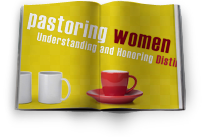Book Review: The Shepherd Leader: Achieving Effective Shepherding in Your Church, by Timothy Witmer
Do you dream of developing a leadership team that actually shepherds the church yet struggle to know what it looks like and how to do it? If you’re a pastor, this dream needs to become a reality!
Timothy Witmer helps turn this dream into reality by offering practical guidance for implementing a shepherding ministry. At the book’s outset he gets straight to the point: “The fundamental responsibility of church leaders is to shepherd God’s flock” (2-3). In order to help elders fulfill this task, Witmer recommends a comprehensive framework for shepherding and provides help in getting it started. Witmer divides his book into three sections that answer the questions why, what, and how.
WHY HAVE A SHEPHERDING MINISTRY?
In section 1, “Biblical and Historical Foundations,” Witmer considers Old and New Testament models that exemplify shepherding. Jesus is “the consummate shepherd” who “provides for the comprehensive care of his sheep,” (30) demonstrated in his sending the disciples to “the lost sheep of ‘the house of Israel’” (Matt. 10:6). Witmer argues that the New Testament pattern of plurality and parity in church leadership grew out of Jesus’ compassion for and mission to his sheep (39, 41).
Historical implications loom large in Witmer’s perspective on church leadership. Chapter 3 surveys the early practice of apostles appointing bishops (presbyters) and deacons (46-47) to serve the church. Yet, Witmer notes, seeds of hierarchy were planted in the second century that came to fruition in the third century through the work of Cyprian that shifted church leadership from plurality to monarchy. Much later, John Wycliffe called for the church to return to the two offices of presbyter (elder) and deacon. Then, during the Reformation, John Calvin divided presbyters into doctors, pastors, and elders. Following on Calvin’s heels, John Knox codified the distinction between ruling and teaching elders, which became the standard Presbyterian position.
As I see it, the one weakness in the book is found at just this juncture. Instead of returning to the simplicity of a plurality of elders (who both teach and rule) and the diaconate, Witmer upholds the distinction of ruling and teaching elders, making some aspects of his approach unpalatable to those who do not see a hard distinction between teaching and ruling elders, especially those who hold to congregational polity. However, this hardly diminishes the book’s value since Witmer emphasizes that the church’s spiritual leaders, by whatever title they are called, “have both the right and responsibility to exercise shepherding care” (75).
WHAT DOES SHEPHERDING MINISTRY INVOLVE?
Section 2 (chapters 5-8) introduces the main focus of the book: a matrix for establishing what is involved in ministry in both public/corporate (macro) and personal/relational (micro) settings. Witmer explains that shepherding involves knowing, feeding, leading, and protecting. To practically facilitate knowing the sheep, Witmer recommends that elders contact the members under their charge monthly.
The macro-level responsibility of feeding involves overseeing the public ministry of the Word, which is best implemented through “systematic expository preaching of the Scriptures” (142). Micro-feeding is personal equipping ministry, which runs the gamut from “small groups to personal discipleship,” while focusing on fathers (146-149). Macro-leading involves worship, education, fellowship, and evangelism, while micro-leading includes modeling godliness in personally walking with the Lord, leading one’s family, and ministering in the church (160-166). Macro-protecting the flock is “built on the foundation of public warnings from the Word of God” (171), while micro-protecting seeks to guard the church’s back door by addressing issues that could prompt people to leave. Micro-protecting also involves monitoring church attendance in order to care for the flock one by one.
HOW DO YOU PUT IT ALL TOGETHER?
The closing three chapters (9-11) offer practical guidance. First, Witmer identifies seven “essential elements of an effective shepherding ministry”: it must be biblical, systematic, comprehensive, relational, functional, accountable, and prayerful.
Second, leaders must be developed and trained. He argues against a rotating system of elders, adding John Murray’s “Arguments Against Term Eldership” as an appendix. Witmer also rightly explains that plural eldership provides “a natural means of developing new churches,” with elders and members who live in the same neighborhood forming the core of a church plant (238).
Third, the final chapter reviews the book’s contents as an implementation guide while offering helpful steps in preparing a congregation for a shepherding ministry. An appendix provides charts and report sheets to facilitate shepherding.
REQUIRED READING FOR ELDERS
I found The Shepherd Leader so helpful that I’m asking all of our elders and pastoral interns to read it. Even churches without a plurality of elders will find guidance for implementing an effective shepherding strategy within their polity. More importantly, church leaders who follow Witmer’s thoughtful guidance will care better for the flock entrusted to them. This book is a must-read for pastors and elders.
Phil Newton is the senior pastor of South Woods Baptist Church in Memphis, Tennessee, and the author of Elders in Congregational Life: Rediscovering the Biblical Model for Church Leadership (Kregel: 2005).









